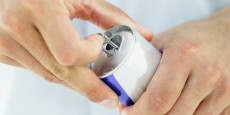

The following is excerpted from an online article posted by MedicalXpress.
A new study examining calls to United States poison centers for exposures to caffeine energy products in people younger than 20 years, conducted by researchers at the Center for Injury Research and Policy of the Abigail Wexner Research Institute at Nationwide Children’s Hospital and the Central Ohio Poison Center, shows a significant rise in exposure rates from 2011 through 2023, with variations by product formulation.
The study, published in Journal of Medical Toxicology, found 32,482 caffeine energy product exposures reported to U.S. poison centers from 2011 through 2023. While the overall exposure rate increased modestly at 17% during the study period, exposure rates varied by product formulation, increasing by 35% for liquids, decreasing by 52% for solids, and—most alarmingly—increasing by 633% for powders/granules. This study did not include coffee, tea, or caffeinated soft drinks in its data.
“The increase in the powder/granules category includes products such as pre-workout powders and powdered caffeine that consumers can add to drinks. Because of unclear dosing instructions or preparation errors, overdose can occur,” said Hannah Hays, MD, co-author of the study and medical director of the Central Ohio Poison Center.
“Concentrated powder or granules may also be mistaken by a young child as a food item. The study noted most exposures in children younger than 6 years (98%) and 6–12 years (56%) were unintentional across all caffeine categories, which is consistent with the natural curiosity and exploratory nature of these age groups.”
Across all caffeine formulations in the study, most exposures were among children younger than 6 years (70%), males (57%), or involved liquid formulations (58%). Most (81%) exposures were not treated in a health care facility; however, 1.6% were medically admitted. Teenagers (13–19 years old) were more likely to be medically admitted or have a serious medical outcome than children younger than 13 years old.
“The difference in the adolescent age group was that most exposures were intentional (61%),” said Dr. Hays, also faculty in the Center for Injury Research and Policy at Nationwide Children’s. “Unfortunately, some of these exposures were self-harm attempts, and nearly all (94%) of reported self-harm attempts in this study were in the teen age group.”
Source: MedicalXpress
https://medicalxpress.com/news/2025-02-poison-centers-child-adolescent-exposures.html
Source: Home Word






